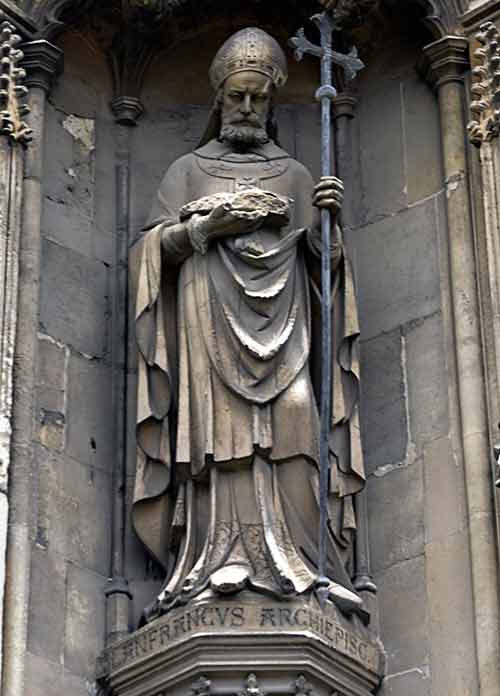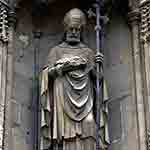
As, on Sundays, for five weeks we are reflecting on John 6, this is a good time to re-look at the Eucharist.
This post can be regarded as the fourth in a series.
Read this first.
Read this second.
Read this third.
Berengar of Tours (c. 999 – 6 January 1088) was taught by Fulbert of Chartres (960 – 1028). Fulbert taught that faith and reason are both good gifts of God, and both have their proper objects. The Eucharist, he taught, is a proper object of faith. He would have the “outer substance” of bread and wine and the “inner substance” of the body and blood of Christ.
Berengar gives more weight to reason.
In the second half of the eleventh century, Berengar defended the orthodoxy of Ratramnus‘ On the Body and Blood of the Lord (at that time attributed to Erigena). I won’t go into the political intrigue around the controversy at that time (ecclesiastical over civil), but Berengar escaped execution several times by recanting his holding to Ratramnus’ position and then simply continuing to teach his position when the heat dissipated.
Berengar was condemned for teaching that the bread and wine are not transformed, and claiming that Christ’s presence is intellectual (spiritual).
Lanfranc (1005 – 24 May 1089) responded with On the Boy and the Blood of the Lord Against Berengar, to which Berengar responded with On the Sacred Supper. This became the “Second Eucharistic Controversy”.
Berengar opposed that the bread and wine cease to exist, and that the body of Christ, as born of Mary, is physically present on the altar. He points out that in saying that the bread is the body, you are saying it is bread. He held to the understanding that accidents (eg. taste, colour) cannot be separate from the substances in which they exist. Christ’s physical body, he taught, is in heaven. Christ was sacrificed once for all, and communion is a memorial of that sacrifice (not in the sense of a mental exercise, but as a sacrament).
For Lanfranc, any reference to bread and wine, after consecration, is using those words symbolically. After the consecration, the body and blood of Christ is on the altar. Referring to them as bread and wine is referring symbolically to what was previously there. Lanfranc was attempting to combine Augustine and Radbertus (785–865).
To be continued…
If you appreciated this post, do remember to like the liturgy facebook page, use the RSS feed, and sign up for a not-very-often email, …
image source: Lanfranc, Archbishop of Canterbury, Canterbury Cathedral




I’m in the midst of an incomprehensible tome by Stephanie Schneiders on the Risen Christ in which she spends hundreds of pages using the most arcane vocabulary to distinguish the “real body” from the natural, fleshy, corporeal body, insisting that Christ rose bodily and is with us today in his risen body. Which is not human skin and bones pulsating with life, but is nevertheless a true body, not a metaphor or a symbol or an idea.
I confess: I do not understand.
But I don’t really care, because I enjoy communion as a way to be with both god and community.
Thanks, Jonathan. I also do not understand (my suspicion is that those who say they do – just don’t get it). Blessings.